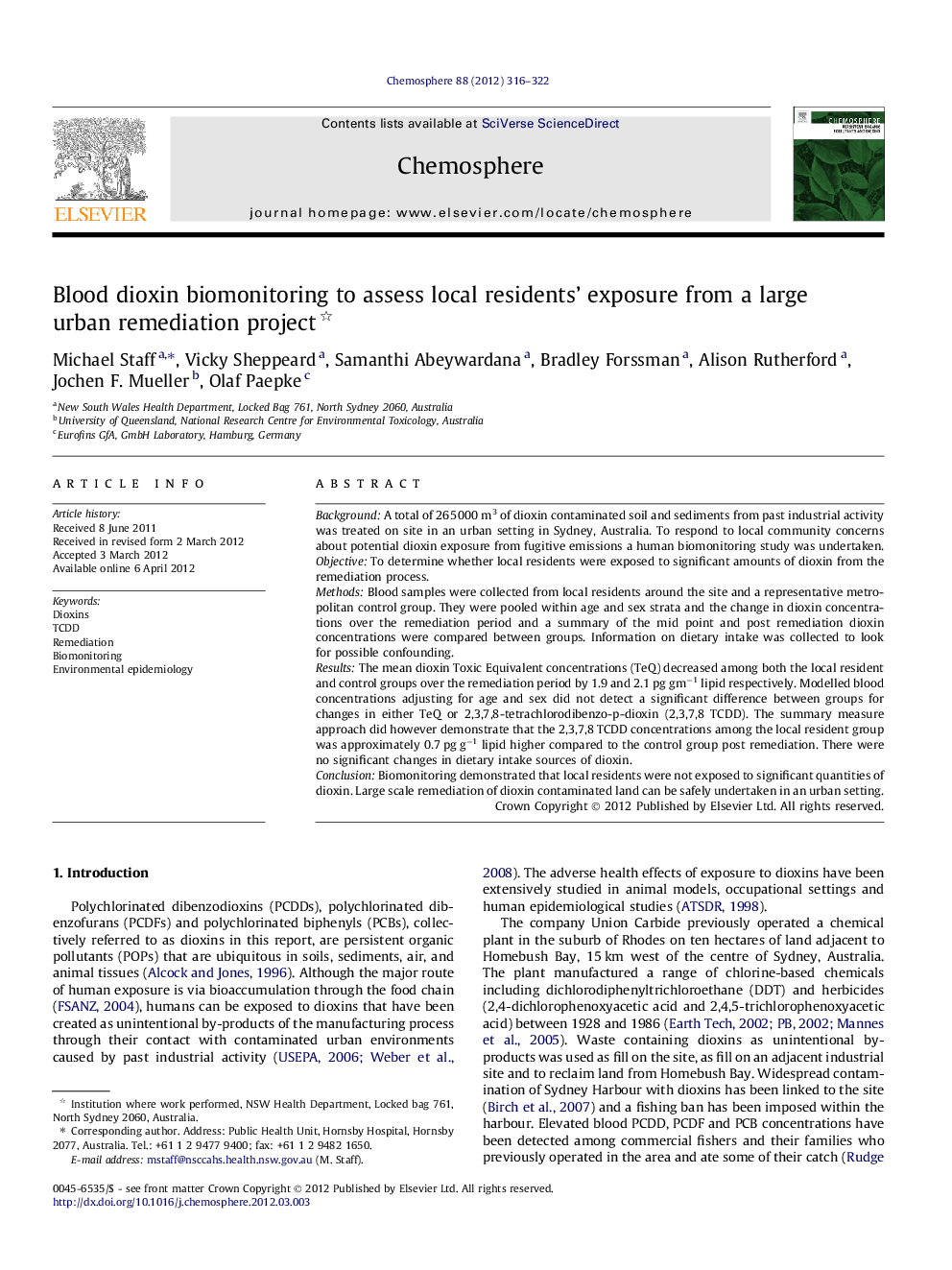| Article ID | Journal | Published Year | Pages | File Type |
|---|---|---|---|---|
| 4410146 | Chemosphere | 2012 | 7 Pages |
BackgroundA total of 265 000 m3 of dioxin contaminated soil and sediments from past industrial activity was treated on site in an urban setting in Sydney, Australia. To respond to local community concerns about potential dioxin exposure from fugitive emissions a human biomonitoring study was undertaken.ObjectiveTo determine whether local residents were exposed to significant amounts of dioxin from the remediation process.Methods: Blood samples were collected from local residents around the site and a representative metropolitan control group. They were pooled within age and sex strata and the change in dioxin concentrations over the remediation period and a summary of the mid point and post remediation dioxin concentrations were compared between groups. Information on dietary intake was collected to look for possible confounding.ResultsThe mean dioxin Toxic Equivalent concentrations (TeQ) decreased among both the local resident and control groups over the remediation period by 1.9 and 2.1 pg gm−1 lipid respectively. Modelled blood concentrations adjusting for age and sex did not detect a significant difference between groups for changes in either TeQ or 2,3,7,8-tetrachlorodibenzo-p-dioxin (2,3,7,8 TCDD). The summary measure approach did however demonstrate that the 2,3,7,8 TCDD concentrations among the local resident group was approximately 0.7 pg g−1 lipid higher compared to the control group post remediation. There were no significant changes in dietary intake sources of dioxin.ConclusionBiomonitoring demonstrated that local residents were not exposed to significant quantities of dioxin. Large scale remediation of dioxin contaminated land can be safely undertaken in an urban setting.
► Human exposure to dioxins from a large contaminated remediation site was studied. ► Blood dioxin concentrations before, during and after were used as an exposure biomarker. ► Dioxin concentration changes were comparable among local residents and non exposed controls. ► Large scale remediation is safe provided strict environmental controls are used.
